Churn is a fascinating thing.
When users keep coming back month after month, it helps you grow your business rapidly and it makes you a very happy business owner.
But when you’re losing more customers than you’re gaining, it can spell disaster for your business.
What makes it frustrating is that you don’t always have a clear picture of what causes people to churn or what you should do about it.
Sure, you can use analytics and it will tell you a lot. But it won’t tell you why people are leaving.
That’s where feedback loops come in.
Building feedback loops into your business allows you to gather data that you can’t get from analytics. You’ll get valuable insights straight from the people who are handing over their hard-earned money: your customers.
In this article, we’ll look at some of the ways you can build customer feedback loops into your business and how to use the feedback that you gain.
How Feedback Loops Help You Reduce Churn
Before we go over some ways you can build in customer feedback loops into your business, let’s look at how they reduce churn.
They help you create an awesome product
You can be the best marketer, the best developer, or the best designer, but if your product doesn’t solve a problem you’re fighting an uphill battle. Especially if your business depends on people buying from you month after month.
One of the best ways to improve your product is to make sure it meets your customer’s needs. How do you figure out those needs? You guessed it: customer feedback.
And while feedback isn’t the be all and end all of product improvement, it helps you figure out if you’re on the right track.
Leadpages, for example, allows people to vote on what they want to see implemented next. This gives them an idea of what their product is missing and what they need to do to make it better.
They help you write copy that connects
Good copy is crucial for any business.
It’s the first thing people see when they land on your website. If you get it right. Your copy can communicate everything your customer needs to know about your business. It can tell them what you’re about, what you can do for them, what their life is going to look like when they use your product.
But if you get it wrong, if your copy doesn’t speak to your audience, they’re going to leave, never to be seen again. Bad copy costs you a lot of money.
In order to write good copy, you need to know what words and phrases your customer uses and how they talk about their problems. This isn’t something you can just come up with in a vacuum or by looking at analytics. You need customer feedback to figure this out.
Once you start using the exact words and phrases your target audience uses, though, they’ll feel like you truly understand what they’re going through. Your copy will be better aligned with what they want and they’ll have a better idea of what to expect.
In October 2016, Hubspot hired conversion copywriter Joel Klettke to help them create better sales copy. Instead of just hammering out new copy, Joel used feedback gathered from surveys, chat logs, and support to create a customer-driven message that increased the total volume of demo requests by 35% and increased the total volume of product signups by 27%.
They allow you to create a better user experience
In order to get people to use your product, you have to show them how to get value out of it as quickly as possible. That means guiding them through the initial stages.
But if you don’t know what is valuable to your users, you could be helping users with the wrong thing.
By using feedback loops, you’ll learn what people are having trouble with and what they consider something valuable. Once you know that, you can craft a user/onboarding experience that sets people up for long term use of your product.
They help you get better, more qualified customers
One of the big advantages of using customer feedback loops is that they help you form a crystal clear image of who your ideal customer is.
You can map out their wants and needs. You get to see what type of people they are. You can figure out what job they have and how they use your product.
You’ll be able to see which customers benefit the most from your product and who might be better off using another solution. You’ll be able to direct your marketing efforts to the people who you know will love it and use it a lot.
4 Common Types of Customer Feedback Loops
Now that we’ve gone over the benefits of using loops in your funnel, let’s explore what types of feedback loops are available and when to use them.
Email is very easy to implement and is one of the most basic feedback loops of them all. While it’s a great way to get to know more about your customer, it can be hard to keep track of all the responses you’re getting.
There are two types of feedback you can get from email. You can either ask open-ended questions like this:
Or you can create closed-ended questions like this:
Open-ended questions will let your customers talk freely about your product and they will give you to most valuable info. Closed-ended questions are better if you have a couple of options you want to explore and you want to ask your customers which one is best.
Surveys
Surveys allow you to gather a lot of information in a short period of time.
With surveys, everything depends on what questions you ask. Asking ‘How awesome are we?’ isn’t going to help you very much, even if you’re awesome.
Here’s an example. Recently, Sumo wanted to find out how they could improve their product and pricing. To do this, they created a short survey and sent it to their users using Sumo’s own notification system.
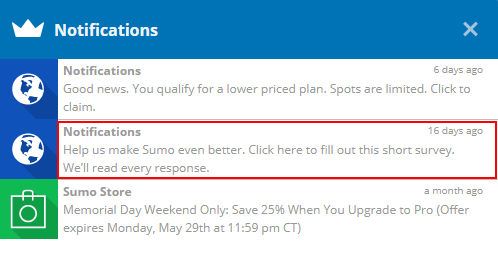
The notification takes you to a SurveyMonkey questionnaire where you’re asked what stage your business is in and how you perceive Sumo’s pricing. It also provides a place to leave open-ended feedback.
Chat boxes
Chat boxes give you a real time, direct communication line between you and your customer.
You’ll have a much faster way of responding to inquiries, but someone has to man the chat.
Chat boxes have several advantages. The biggest one, however, is that it allows you to help a customer overcome a pain point before they get frustrated and leave.
They help increase sales, too. When Cory Miller from iThemes started using live chat on their website they noticed more opportunities to upsell customers. By building trust and answering questions, customers had more confidence in what they were buying.
Support
The good thing about support is that you probably already have it installed in your business. It’s a goldmine when it comes to product ideas or ideas for improving your customer experience.
If they have a technical problem they’ll tell you. If they don’t know how to use a feature, they’ll tell you. If they find something confusing, they’ll tell you.
The downside of support is that you can not actively request feedback from people. It’s a passive way of gathering feedback.
How to Use customer Feedback to Improve Your Business
In this section, we’ll go over some ways you can use the feedback that you’ve gained to improve your business and reduce churn. We’ll look at how to prioritize what part of your product to improve next, how you can use the feedback to improve your copy, and how you can use the feedback to craft a better user experience.
Improving your product
Making changes to your product is a big decision.
But if you do it right, it can make your life a lot easier. If you mess up, you end up increasing churn instead of decreasing it.
So how do you know what feedback to listen to and what feedback to ignore? After all, if you ask 10 people what your product should look like you’re likely to get 11 different answers.
According to J.T.Trollman, product designer at Facebook, it depends on 2 things:
- Knowing your core values
- When in doubt, count
The first thing you need to do is be crystal clear about your values. What are you trying to do? What problem are you trying to solve?
If the feedback you receive contradicts your core values, you ignore the feedback and continue building what you’re already building.
But what if you’re not sure?
In that case: count. A lot of times a small group of people will have a very strong (and loud) opinion. Count how many people are saying the same thing and if that number is big enough, adjust accordingly.
In the Leadpages example we’ve talked about earlier, you can see they’ve labeled all the suggestions. If the suggestion is aligned with their values and enough people vote for it, it gets implemented. But when the idea doesn’t fit their vision, they label it ‘will not implemented’.
This gives them a nice balance between what people want and where they want to go as a company.
Improving your Copy
To write good, persuasive copy, you need to know answers to 3 questions.
- What does your customer want to achieve?
- What does your customer want to avoid?
- What is stopping them from achieving their goal?
Once you know that, you can write copy that inspires them to take action and overcomes objections.
But you still need to know what exact words and phrases they use. A good way to figure that out is to take your responses and turn them into word clouds. This will quickly show you what words are being used the most.
There are plenty of free services online that can help you turn feedback into word clouds. A couple of good ones are:

Once you have your word clouds, ask yourself the following questions:
- What specific words are they using? (e.g: leads)
- What words aren’t they using that they could be using? (e.g: subscribers)
- What do they talk about a lot? (e.g: content)
Improving the Onboarding Experience
When customers use your product or service for the first time, they don’t know what to expect. If they don’t know what to do or what to look for, chances are they’re going to leave and look for a different solution.
The goal of your onboarding experience is to get your user to a point where they can see the value in your product. Facebook, for example, is useless if you only create an account. Once you start adding friends and join some groups, you get to see what it can do for you.
Take a look at your feedback and see if there are any recurring problems people are facing. Are they having trouble with a certain feature? Do they have no clue where to start? Are they getting confused by the UI?
Once you know what people are struggling with, you can adjust your onboarding experience to nip churn in the bud and prevent customers from leaving.
Mention, for example, already had a good idea of what users wanted thanks to user feedback. Their automated marketing process was doing a good job at converting free users into paid ones. But whenever a free user became a paid one, the whole marketing process came to a standstill.
Realizing this could increase churn, they extended the lifecycle emails to paid customers and showed them how to get the most out of every feature.
Creating content
Not only does customer feedback help you better serve your current customers, it also helps you attract new ones.
Once you have a good idea of who you are targeting, you can create content that closely fits their needs. And if you add the words and phrases you found earlier, you can really get this going and make awesome content that attracts people to your business.
You can also use the feedback to beef up your Frequently Asked Question and support sections. This will help you solve the biggest problems and it will take some pressure off you so you can work on things like your product.
Keeping Your Customers Happy
Building feedback loops into your business might seem like a ton of work.
And it is. It does take time and it does take effort. But the time and effort you put in will pay off in the long run.
By listening to your users, you start to reveal patterns that help you reduce churn. You start to reveal what your customers want. You start to reveal ways you can grow your business.
And it will make you a very happy business owner.
Have you ever used customer feedback loops to reduce churn? Let me know in the comments.
About the Author: Robin Geuens is a freelance copywriter that helps businesses write copy that connects. Get his report, 7 Tools That Reveal What Your Customer is Thinking to get a deep understanding of who your customer is.
from The Kissmetrics Marketing Blog https://blog.kissmetrics.com/feedback-loops-to-reduce-churn/
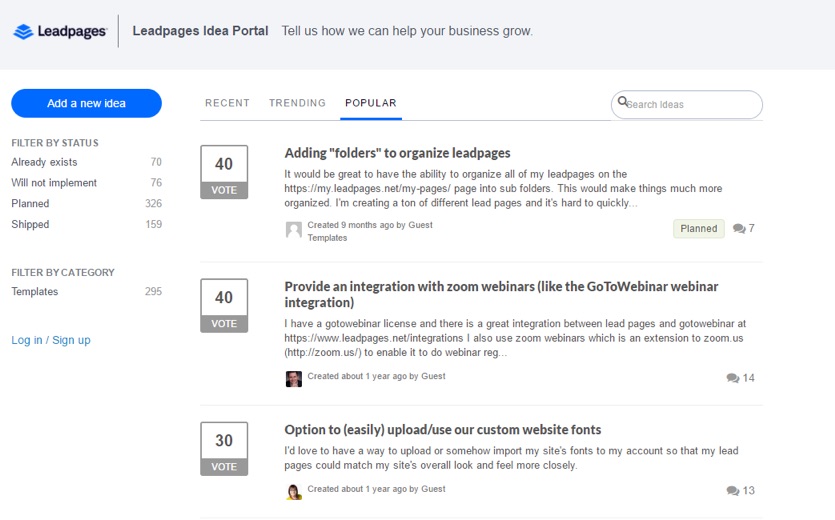
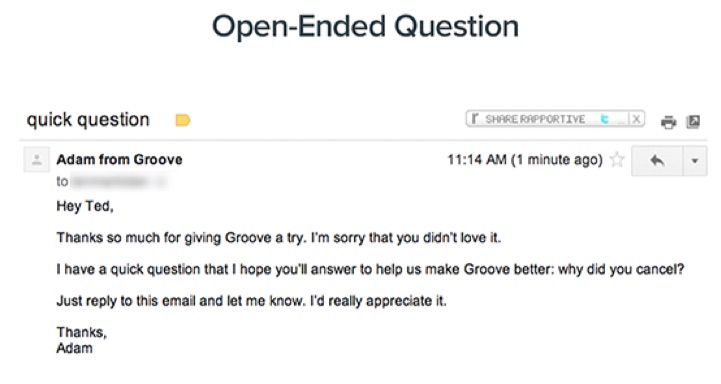
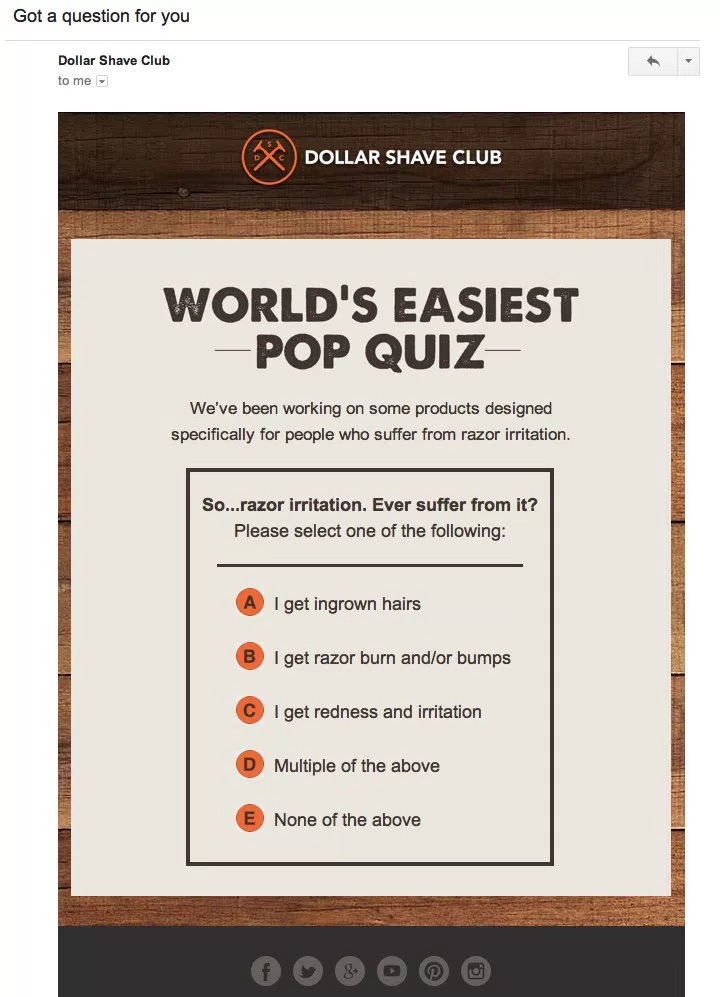

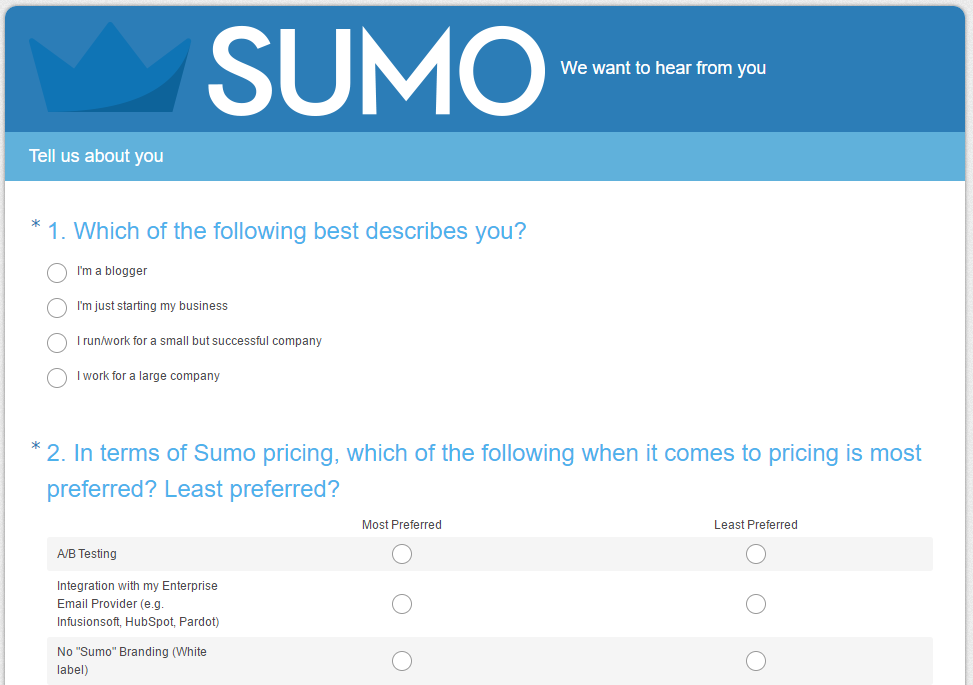
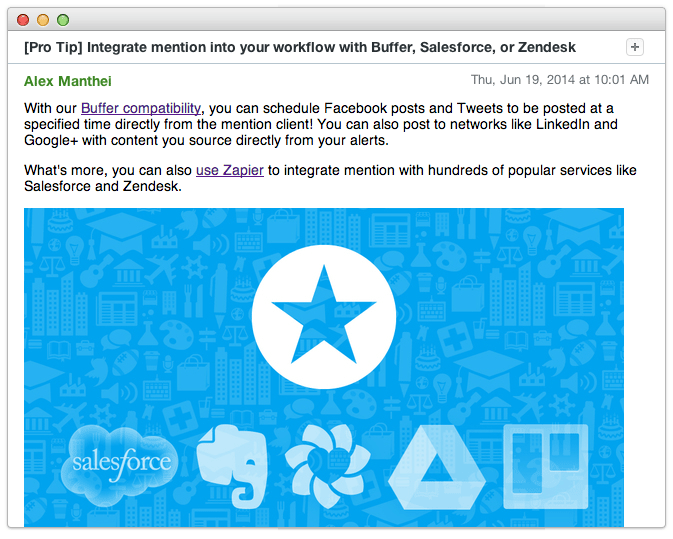
No comments:
Post a Comment